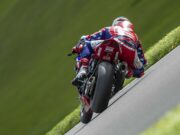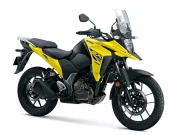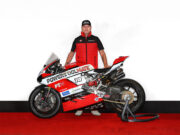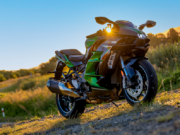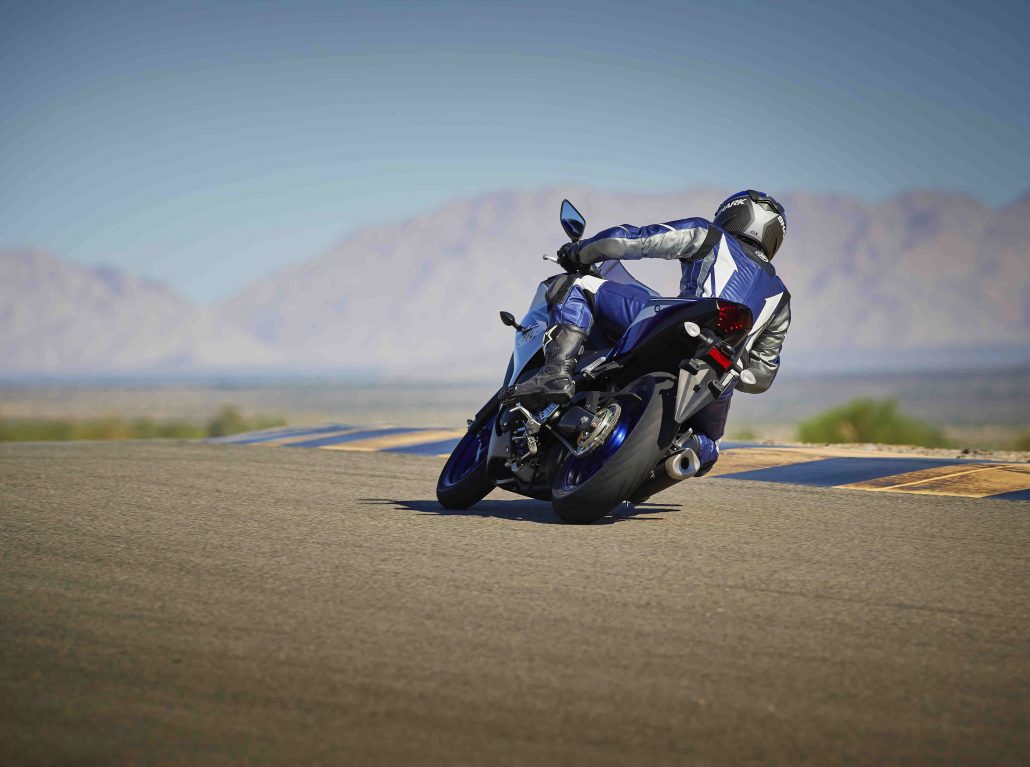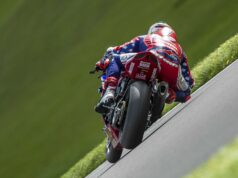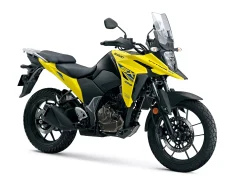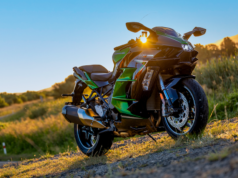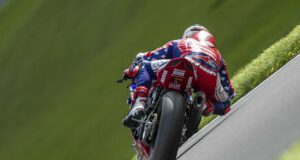By Roland Brown
Yamaha are serious about lighting up the learner class but their new models are appealing to riders from more than just the LAMS ranks – Roland and Kev found out why…
We’re outside a café sipping coffee next to a line of YZF-R3s whose tyres are hot to the sidewalls when the Swiss guy comes out with a bold statement. “This is a perfect bike for the mountain roads at home,” he says. “If we rode an R1 like that we’d soon be in jail.”
He’s got a point. Would we have had an even better, more adrenaline-filled ride on a fast but inevitably also more licence-threatening super-sports bike? Possibly, but not by very much, if at all. What’s not in question is that the YZF-R3 has been hugely impressive, and looks like sweeping into the LAMS sportsbike market with almost as much force as its R1 sibling has just done in the open-class category.
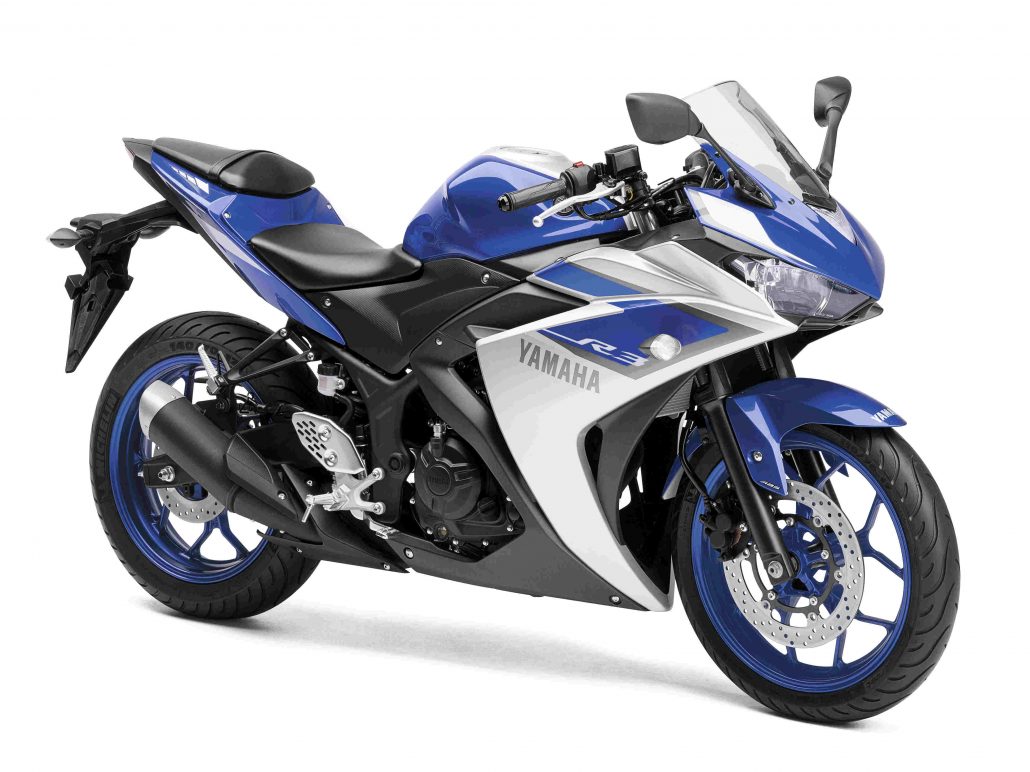 The introduction of a bike like the R3 was just a matter of time, once Yamaha awoke from its recessionary slumber. The European A2 class and the Australasian LAMS classes have become important battlegrounds and the R3 fits the format on all counts. Its 321cc parallel-twin engine’s maximum output of 41bhp is just under the imposed limits, and the bike also comes close to the maximum power-to-weight ratio allowed for that licence class. The R3 was also designed to be produced with a 250cc engine, but otherwise near identical, for some markets, mainly in Asia. And it’s built not in Japan but in Indonesia, for global sale in one form or the other. It was designed to be 321cc, so it’s them that get the altered form, not us.
The introduction of a bike like the R3 was just a matter of time, once Yamaha awoke from its recessionary slumber. The European A2 class and the Australasian LAMS classes have become important battlegrounds and the R3 fits the format on all counts. Its 321cc parallel-twin engine’s maximum output of 41bhp is just under the imposed limits, and the bike also comes close to the maximum power-to-weight ratio allowed for that licence class. The R3 was also designed to be produced with a 250cc engine, but otherwise near identical, for some markets, mainly in Asia. And it’s built not in Japan but in Indonesia, for global sale in one form or the other. It was designed to be 321cc, so it’s them that get the altered form, not us.
Family Dynamic
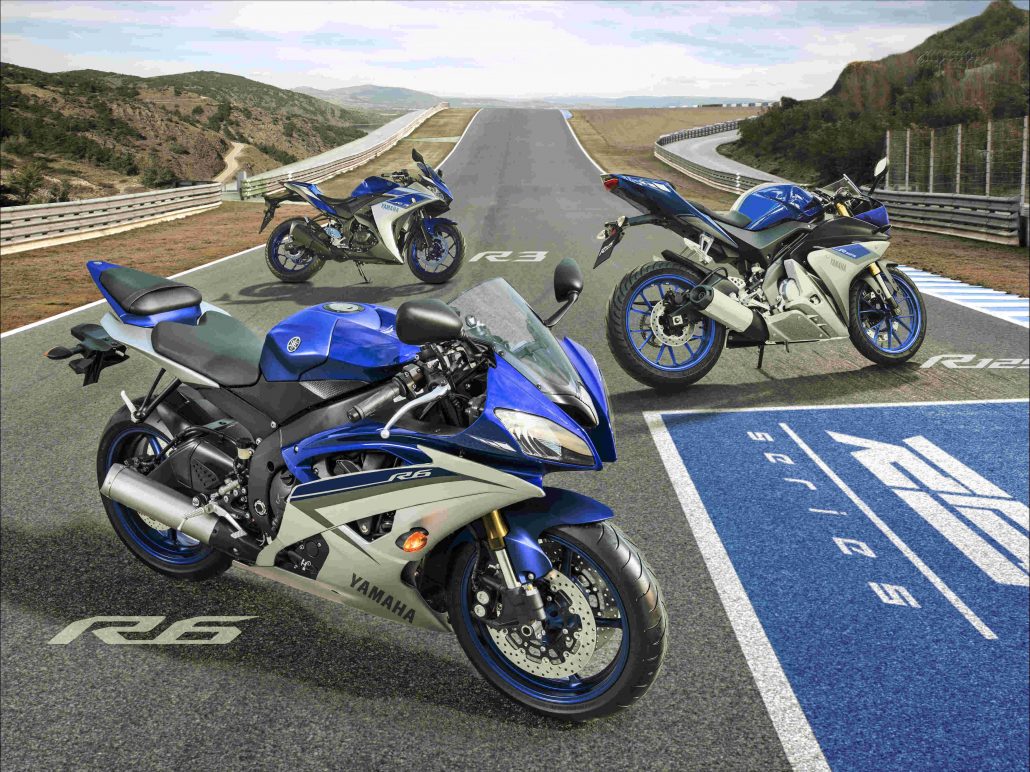 That all new DOHC eight-valve parallel twin motor shares its technology with other Yamaha models. It has an offset cylinder layout, like that of the larger MT-07 twin-pot unit, and features forged pistons plus carburised connecting rods, which have finer tolerances than standard items. It dimensions of 68 x 44.1mm mean it’s almost as over-square as the new R1, and it’s certainly designed to rev. Peak power is produced at 10,750rpm and the limiter cuts in at 13,500rpm.
That all new DOHC eight-valve parallel twin motor shares its technology with other Yamaha models. It has an offset cylinder layout, like that of the larger MT-07 twin-pot unit, and features forged pistons plus carburised connecting rods, which have finer tolerances than standard items. It dimensions of 68 x 44.1mm mean it’s almost as over-square as the new R1, and it’s certainly designed to rev. Peak power is produced at 10,750rpm and the limiter cuts in at 13,500rpm.
By contrast the frame is nothing like the aluminium beams of the R1 and R6, being a relatively simple tubular steel structure that uses the engine as a stressed member. It holds a steel swing-arm that operates directly on the near-vertically mounted rear shock, which is adjustable for preload only. There’s no adjustability with the 41mm KYB front forks, which hold a 17-inch front wheel and a single disc brake.
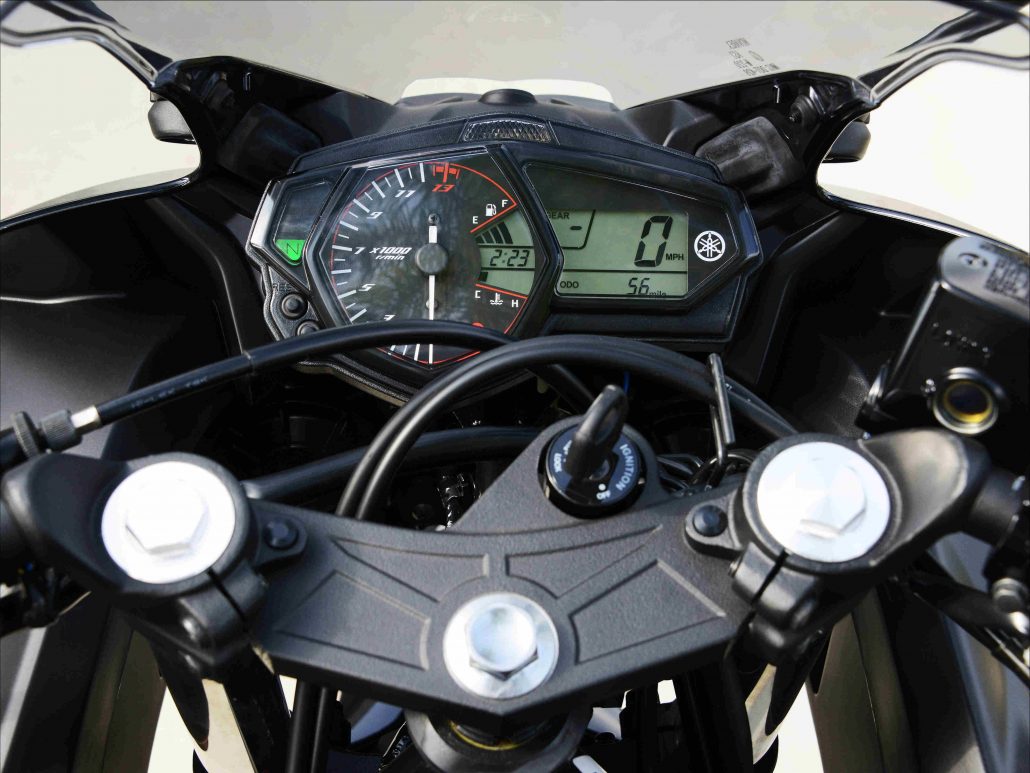 The R3’s fully faired look is designed to be as racy as possible, with a full fairing, mean twin-headlamp glare and even a blue-and-white paint option (with rd and white or black as alternatives). But this learner-friendly newcomer is not a track-focused supersports weapon like the R1 and R6. It’s intended for everyday and even urban use, so its clip-ons are relatively high, and its riding position upright and relaxed, without too much weight on your wrists.
The R3’s fully faired look is designed to be as racy as possible, with a full fairing, mean twin-headlamp glare and even a blue-and-white paint option (with rd and white or black as alternatives). But this learner-friendly newcomer is not a track-focused supersports weapon like the R1 and R6. It’s intended for everyday and even urban use, so its clip-ons are relatively high, and its riding position upright and relaxed, without too much weight on your wrists.
Despite that the Yam felt comfortable and controllable as its engine fired up with a gentle growl from the stubby silencer, and I headed off through the town of Reus. Despite that potential for high revs the engine was very rider-friendly, pulling away smoothly as I released the light-action clutch, responding to the throttle and picking up speed without the hint of a hiccup as I short-shifted through the light six-speed gearbox.
The Yamaha’s light weight (at 169kg with a full tank it’s a few kilos heavier than the RC390) also helped make it very easy to ride – and it certainly came to life as we headed west and the road opened up.
Thrash-me, Beat-me…
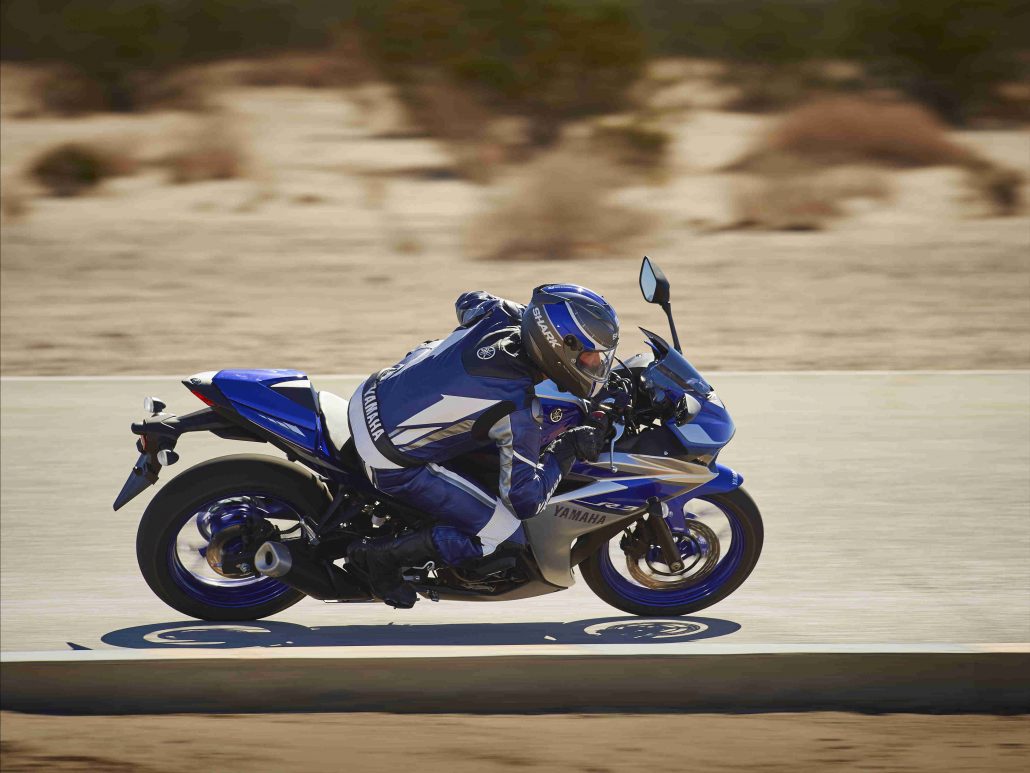 Mind you, the R3 only works properly if you use it right. As we passed the derestricted sign the lead rider cracked his throttle open, so I did the same… But unlike him I hadn’t bothered changing down a couple of cogs, so within a few seconds he was about 200m ahead and still pulling away. I didn’t make that mistake again, and from that moment it was game on for an entertainingly rev-happy thrash.
Mind you, the R3 only works properly if you use it right. As we passed the derestricted sign the lead rider cracked his throttle open, so I did the same… But unlike him I hadn’t bothered changing down a couple of cogs, so within a few seconds he was about 200m ahead and still pulling away. I didn’t make that mistake again, and from that moment it was game on for an entertainingly rev-happy thrash.
Naturally the bike was even more fun when we reached the twisty and smooth-surfaced road that carved through the hills towards that coffee stop at Porrera. The lead rider wasn’t hanging about – we had to scratch pretty hard to keep up – and the Yamaha certainly didn’t let us down. For such a relatively small and simple bike it impressed with its steering, stopping power and even the grip of its narrow Michelin Pilot Street tyres, all of which seemed very well matched to the bike. That said, for the Australasian launch that Kev went to, Dunlop Alphas were fitted, sharpening the track manners even more.
Trackday Fun
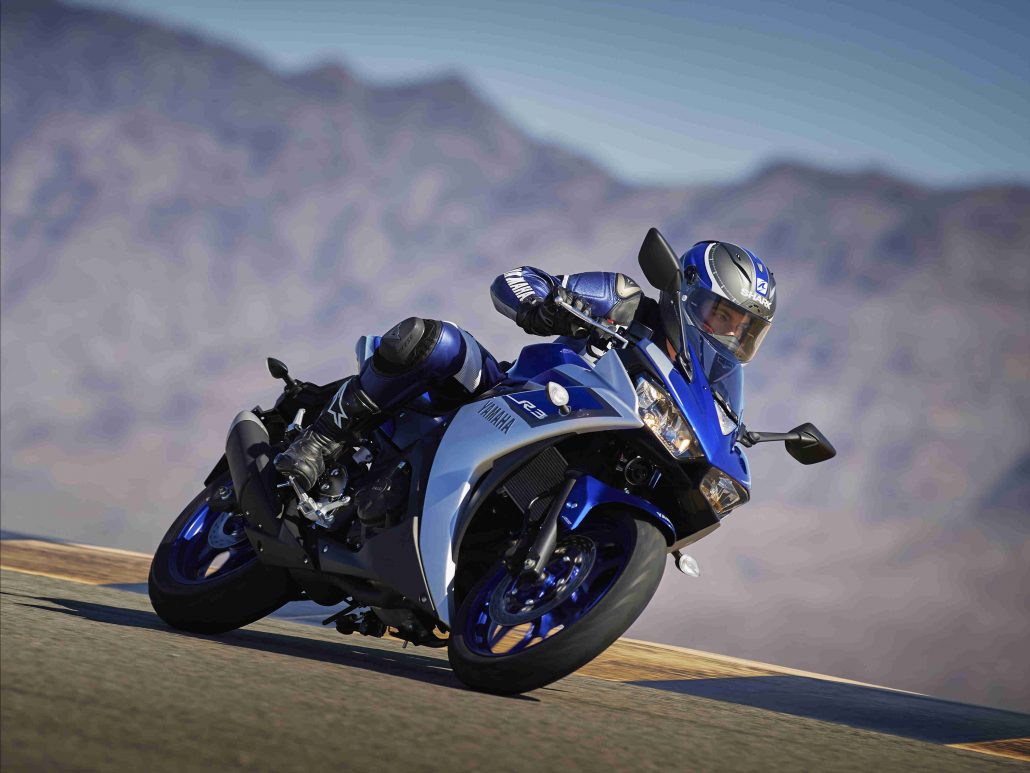 The Yamaha was certainly great fun to ride on the track, and would make an excellent introduction to track days for a relatively inexperienced rider. On the other hand it should also make a respectably practical and inexpensive all-rounder, which will doubtless be equally important to the majority of its mostly youthful owners. Fuel consumption averaged 6.1 l/100km with constant thrashing but could doubtless be improved to 5l/100km or better with more restrained use, giving a range of 250km from the 14-litre tank.
The Yamaha was certainly great fun to ride on the track, and would make an excellent introduction to track days for a relatively inexperienced rider. On the other hand it should also make a respectably practical and inexpensive all-rounder, which will doubtless be equally important to the majority of its mostly youthful owners. Fuel consumption averaged 6.1 l/100km with constant thrashing but could doubtless be improved to 5l/100km or better with more restrained use, giving a range of 250km from the 14-litre tank.
Other details are mostly good, notably the stylish instrument panel, which combines the analogue tacho with a digital speedo and includes an adjustable shift light, plus gear indicator, fuel gauge and consumption reading, though the info can’t be toggled from the bars and the indicators don’t self-cancel. The mirrors are reasonably wide, and by sports bike standards there’s even a half generous pillion seat.
Even so, it’s all enough to make the YZF-R3 a very classy and respectably rider-friendly all-rounder, as well as a sharply styled, enjoyably quick and sweet-handling machine on which to attack the local back roads. Like most recent Yamahas it’s competitively priced, too: more expensive than Honda’s less powerful CBR300R but cheaper than the CBR500R, the RC390 and even Kawasaki’s Ninja 300. Accessories range from a screen and LED indicators to an Akrapovic slip-on can and even a full system from the same firm.
So the comeback that Yamaha started with the naked MT models has been continued with super-sports bikes: firstly the R1 and now the YZF-R3, which in its own way is almost as impressive. As a go-anywhere sports bike restricted licence holders or anyone else who wants race-bred style and lively performance at a very modest price, the R3 has certainly got plenty going for it.
Yamaha YZF-R3
- Engine type – Liquid-cooled parallel twin
- Valve arrangement – DOHC, eight valves
- Displacement – 321cc
- Bore x stroke – 68 x 44.1mm
- Compression ratio – 11.2:1
- Carburation – Digital fuel injection
- Maximum power – 41bhp (31kW) @ 10,750rpm
- Maximum torque – 29.6N.m @ 9000rpm
- Clutch – Wet multiplate
- Transmission – 6-speed
- Front suspension – 41mm telescopic, 130mm travel
- Rear suspension – Single shock, adjustment for preload, 125mm travel
- Front brake – Twin-piston caliper, 298mm disc with ABS
- Rear brake – Single-piston caliper, 220mm disc with ABS
- Front tyre – 110/70 x 17in Michelin Pilot Street
- Rear tyre – 140/70 x 17in Michelin Pilot Street
- Rake/trail – 25 degrees/90mm
- Wheelbase – 1380mm
- Seat height – 780mm
- Fuel capacity – 14 litres
- Weight – 169kg kerb



